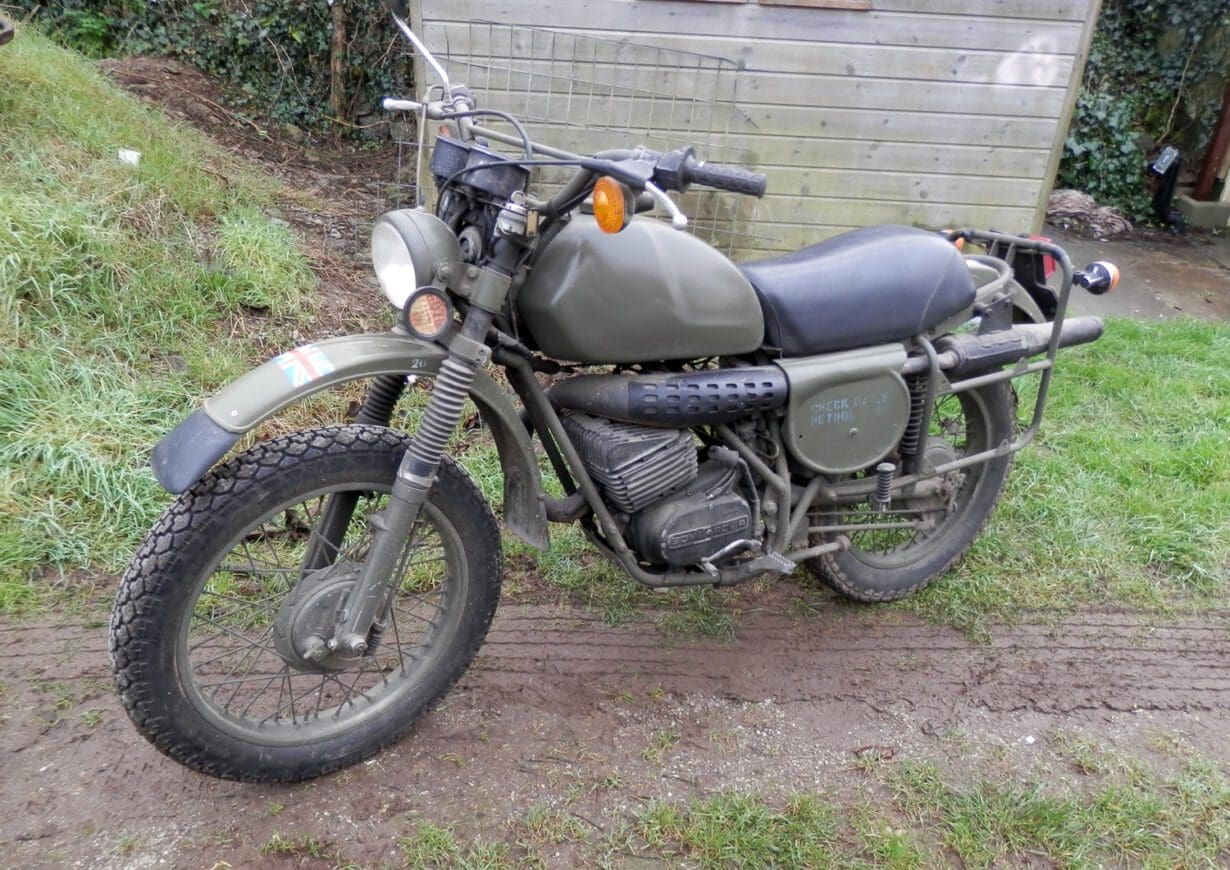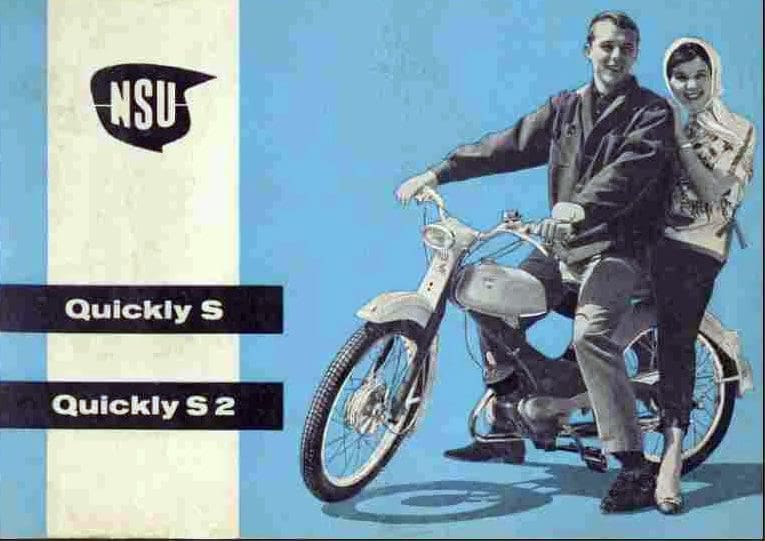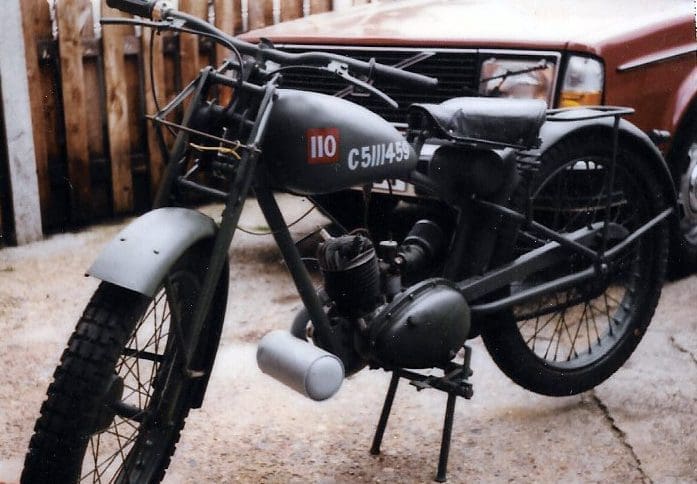Frank Burbery has a warning for readers of RealClassic. Beware! After reading his first copy, he immediately bought two classic bikes (and a subscription to the magazine. Top man). This classic motorcycling thing is catching…
I bought a 250 Can-Am Bombadier after reading about it in the RC. This was the first 2-stroke I’d owned for years, a first-time starter and a most enjoyable ride through the Cornish lanes on my commute to work. I then bought an Armstrong MT500, mainly because it has an electric starter.

My father was a keen motorcyclist all his life. In the late 1950s and early 1960s he owned a 1955 Francis-Barnett Cruiser 68. This came from Meetens at New Malden in Surrey and was rather unusual in that it was in black instead of green. The F-B was the first bike that he had with ‘modern’ suspension. He commuted on it every day from Chessington to Brixton, where he worked as an engineer.
Every Thursday he would pull into the local filling station and ask for two gallons of 2-star petrol. The pump attendant (remember them?) would ask ‘how much oil?’ My father’s answer was always ‘none, thank you’. The confused attendant would say ‘but it’s a 2 stroke, you must have some oil.’ My father would just politely refuse and ride off. This ritual went on for several years and the poor pump attendant never realised that my father had turned off the petrol tap as he arrived. He had just enough fuel in the carburettor to get him home where he proceeded to add his own oil: cheaper that way!

A few years later and he was working closer to home. He started cycling the mile or so but it was up a steep hill. Something motorised was called for. A colleague had an NSU Quickly which he had been meaning to put on the road for some time. Ideal, thought my father, so he and I went in my van to see it. The NSU wouldn’t start… but how difficult could it be? A price was agreed and it was loaded up. Several hours later, it was still a non-runner!
My father was not to be beaten, especially when he found the names of most of his new colleagues in the logbook as previous owners. Apparently, they’d all had a go at sorting it and then passed it on to the next unsuspecting soul. After several evenings’ work, the problem was solved – a leak in the crankcase which just needed a new gasket. Within a few days of buying the NSU, my father rode it to work. The last owner casually enquired if he’d had much trouble in starting it.
‘No, not at all,’ said my father. ‘Fresh fuel, clean the plug and away it went’. With most of the workshop listening intently, he explained that the reason for the delay in using it was merely to get it taxed and insured. As far as I know he never told them the truth and the little NSU gave many years of service up and down that steep hill.
The very first motorbike that I rode on was my father’s Excelsior, a Model O (I think), with the gear change in the middle of the tank and a twin-port 2-stroke engine. The hand gearchange was modified to foot operation by my father. He also added a pillion pad and high level footrests and I was riding pillion before I was five years old, with a long belt joining us both together!
The Excelsior gave sterling service for many years, with regular decokes to make sure it could cope with steep hills. This entailed soaking the silencers in a caustic soda solution on Saturday afternoon, replacing them on Sunday afternoon and cleaning the carbon from the engine, ready for work on Monday.
The Francis-Barnett Cruiser gave me my first taste of solo motorcycling, on a cold Sunday afternoon in December 1962, just after my 16th birthday. L-plates were attached and we went to a quiet stretch of new road nearby. Off I went, through the gears, fantastic! My instructions were to go to the end of the road, turn around and come back. All went well but for the fact that no mention was made of the need to change back down through the gears… Around I went, mounting the pavement and stalling the bike in the process. This must surely rate as the shortest driving lesson in history, and my father was not impressed.
A few weeks later helped me to buy my first powered two-wheeler, a 150cc Lambretta which I kept this for 18 months or so. Motorcycles then took a back seat for the next 10 years until in 1976 I needed of transport for work. My brother in law had bought a new Honda C70 from Commerfords. After a few months he had an accident on it, so I bought the C70. It was quite interesting for the first few hundred yards as no one had told me there was no clutch to operate!
I used the Honda every day to commute for about five years. An amazing little bike for the 19 mile round trip, giving 135mpg. This was the only bike that my wife rode pillion on. We made the five mile journey to my parent’s house, but she was so unimpressed that she went back on the bus!

My interest in two-wheeled transport was reignited soon after I bought the C70. I bought a military bike, a Matchless G3L (GAD 449, where are you now?) This came with part of an engine and other bits and pieces, so my father suggested advertising for the missing bits. The result was I bought another G3L, complete except for the front wheel. Next we went to see a chap in Reading who had two logbooks and most of two bikes, all in bits. Things were getting a bit crowded at home so I rented a lock up nearby to accommodate the overflow.

My father retired and was keen to keep busy so I thought it would be nice to have other WW2 bikes. Over the next few years we bought several more, including a Norton 16H, a rare model with run-flat tyres. Actually the tyres had 750 x 16 tubes stuffed in which did not leave much room for air! A Royal Enfield 350cc CO and three Royal Enfield Flying Fleas also joined the fleet. Two were genuine military models and one was a postwar civilian model which was sold on.

I was also looking for a Norton Big 4 with a sidecar, but didn’t realise how rare they were. Through the VMCC I met Keith, who had two of them. A deal was agreed and my son and I drove to Worcestershire to collect what I thought would be a fairly complete bike. Instead I was greeted by the sight of Keith searching through his workshop for various bits and pieces to complete the jigsaw. He kindly put us up overnight and the next day we loaded a virtually complete Norton Big 4 combination on to the pick-up.
This restoration was challenging as at the time only about 12 of these bikes were thought to have survived. I believe that there are now about 35-40 known to exist and, although a few items are shared with the Norton 16H, most parts must be very rare. One of the missing items was the framework that supports the two saddles. Keith loaned us an original and my father very cleverly replicated it, so well in fact that when I returned the original to Keith he had trouble telling them apart.
By now I had two lock-ups for 15 bikes, but family commitments and a change of work made me decide to downsize. I slowly sold the bikes, only keeping a G3L that had been rebuilt as a trials bike. This Matchless came with us when we moved to Cornwall and I started collecting the missing parts needed to make it more standard.

Soon after the move, I ventured into the world of twin cylinders with an LE Velocette; an excellent little bike with a screen that deflected the rain very well. This was followed by an AJS 650 CSR. I regret selling the 650 although it was probably for the best as I became a bit of a speed freak on it!
The Matchless G3L tale goes on – it appears in RC217, the May22 issue of the magazine.
———-
Words: Frank Burbery
Photos: Frank Burbery / RC RChive




